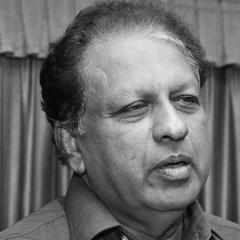Glancing through an issue of the Khaleej Times any day is more exciting than visiting Dubai Expo, which has concluded with great pomp and show. In technology, the Expo is frozen in time five years ago when it was planned, but the stories in the Khaleej Times describe a vibrant city, which is far ahead of its times. The Dubai Expo is far advanced in technology than the Expo 70 in Osaka, Japan, and Expo 98 in Brisbane, Australia, which we had visited, but the developments which are reported in the newspapers show a portal into the future in its innovation, mesmerizing possibilities and daring experimentation.
“UAE, GCC can easily replace cash with digital currency,” “How the world has changed in two years,” “Preparing for the future makes you part of it. Ignoring the future makes you at the loss of it,” Dubai plans to create futuristic city in Metaverse,” “Michelin Guide comes to Dubai,” “Dubai to help shape govts of the future,” “The Museum of the Future is a global architectural icon which shows that human miracles are possible,” “UAE to have world’s first carbon trading exchange,” “Summit on hybrid work today,” “Dubai colleges see spike in enrolment,” “ Progressing toward future of education,” and “Meet the world’s youngest programmer” are just some of the headlines in a single day. (March 30, 2022).
Education hub
The education scene in UAE has become a draw for investors, providers and students. The UAE is home to many world-class educational institutions like BITS Pilani, The UK College of Business and Computing and some Canadian Universities, thus reforming the industry so that it is on par with global trends and best practices. In a great reversal of previous trends, foreign students have begun to arrive in large numbers and the local students do not need to migrate anymore.

Mind-boggling!
These mind-boggling changes leave behind the marvels of the Expo like its gigantic Water Feature, the Iron Gates and the Al Wasl Dome. The water feature is a seemingly gravity-defying star attraction which combines elements of the earth, water and fire. Giant sheets of water tumble down vertical walls 13 meters high that by day cascade into a multi-hued circle of fire, and by night seemingly defy gravity by flowing upwards accompanied by an orchestral score by an award-winning composer. In other words, it is no more than an application of an existing technology recreated to delight and educate a large gathering.
The doors to the first World Expo hosted in the Arab region consist of an intricate latticework reminiscent of the masharbiya architecture, a hallmark feature of the Islamic civilization, where one sees a wiry carbon wire woven into geometric precision, instead of a brick-and-mortar wall. The six-storey tall structure shades you from the Arabic sun and provides relief from heat. This, again, is a traditional technology deployed in an innovative way for a specific purpose.
The Al Wasl Plaza is the home to the world’s largest 360-degree projection dome. Al Wasl was the historical name of Dubai which means connection in Arabic. The dome is 67 m tall and surrounded by 13.6 kilometer-long steel wall. Two-hundred-and-fifty-two laser projectors splash onto the surface of the dome, which can be viewed from inside and outside it — another instance of a technological and engineering marvel of the best available technology.
The Expo looks like a high school exhibit of Lego creations, strange architectural creations all over the place with no pattern and filled with the treasures from those countries which will take a long time to study. The formidable queues running for miles would deter anyone from trying to enter the pavilions except of countries like Lesotho and Botswana. Those of Saudi Arabia, Germany and the UAE are the most frequented as they are futuristic and interactive. The queues, mostly consisting of Indians are long outside the Indian pavilion, but it has not been rated by those who made an effort to visit it. The visiting Chief Ministers from India drew their own crowds.
A marvel of engineering
In contrast, the future forward marvel of engineering feat at the Museum of the Future in downtown Dubai is a breathtaking experience, placing the UAE firmly in the galaxy of nations which can deliver technology appropriate for the requirements of the 21st century. Here, dreams venture into reality. Through its futuristic design, the building welcomes people of all ages to experience, see, touch and shape our shared future. It is an ever-changing exhibition space, whereby partners can showcase transforming technologies that will be part of human life before long.
The evolution of various forms of life as they have evolved and their future are encased in glass jars for people to observe and study. By using the 3D technology, a NASA space station of 1981 has been reconstructed to portray how the new space station will be built and used. The world’s largest 21-metre long Rigiflex screen is capable of projecting the most incredible scenes of the future. Just like the new phenomenon of the history of the future in geniuses like Yuval Harari, the art of mapping out future technologies is a game-changing trend. But unlike science fiction, the new form of creating the future goes beyond fantasy and imagination and depends on proved technologies to build the world of the future.
The lighting with Osram Digital Systems has created canopies to light the parking area like a space ship. The safety system goes beyond existing conventions through safer algorithms and provides cutting-edge security and safety solutions. The Museum of the Future will not be static, but a dynamic monument of the future, which will be constantly updated. As His Highness Sheikh Mohammed bin Rashid al Maktoum, Vice-President and Prime Minister of UAE and Ruler of Dubai said, “The future belongs to those who can imagine it, design it, and execute it. It is not something we await, but rather create.”

















